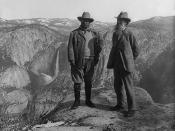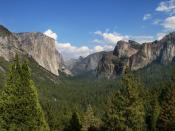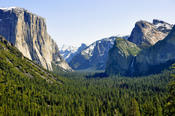Visiting Yosemite National Park
This report will include the park's history and geology, the wildlife, the trees, the valley and falls, the fees and permits for the park, and when to visit.
The American Indians have lived in the Yosemite region for over 8,000 years (National Park Services, Page 1). By the mid-nineteenth century, the native residents had their first contact with non- Indian people. The native people of Yosemite had an ethnicity of traditions, including religion, songs, and political affiliations. On June 30, 1864, President Abraham Lincoln signed a bill granting Yosemite Valley to the State of California, as an inalienable public trust. This meant that it could not be taken away from the State of California. This was the first time in history that the federal government had set aside scenic lands, simply to protect them and allow all people to enjoy it (National Park Services, Page 2).
Yosemite became a national park on October 1, 1890. Automobiles were not permitted into the park until the year 1913. By the year 1954, visitation surpassed one million people and by 1976, over two billion people had visited the park. In the mid-1990's, visitation peaked over four billion people (National Park Services, Page 2). Yosemite National Park covers a huge area of the western Sierra Nevada Mountains in central California. Yosemite is approximately 200 miles east of San Francisco. There are three state roads that approach from the west and meet on the lower ends of the valley. At the western ends of the valley, where the mountains at either side come close together, the roads become narrow and pass through several tunnels. The park ranges from 2,000 feet above sea level to more than 13,000 feet with several major attractions, including Yosemite Valley (with waterfalls), cliffs, and extraordinary rock...


